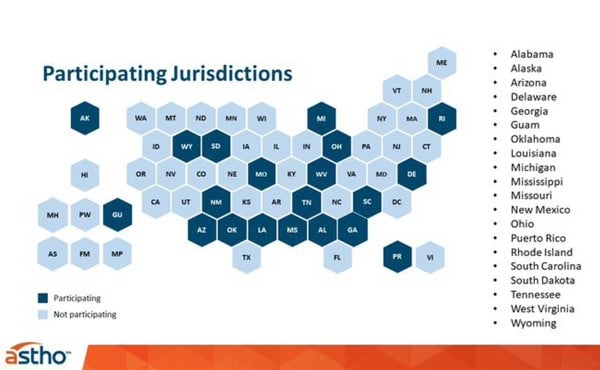Embedded: One Year Review of Disability and Preparedness Specialists Project
December 01, 2021 | Adrianna Evans
On International Day of Persons with Disabilities (Dec. 3), ASTHO is commemorating nearly 12 months of supporting disaster and preparedness specialists in state and territorial health agencies. Working through a CDC-funded cooperative agreement, ASTHO developed the program to help close emergency preparedness inclusivity gaps for people living with disabilities. Throughout 2021, ASTHO embedded the specialists within state and territorial public health agencies to ensure an inclusive approach to emergency preparedness.
Background and Program Overview
The COVID-19 pandemic called attention to the many inequities people living with disabilities face each day. Some people living with disabilities are at higher risk of developing severe COVID-19. For some groups, social distancing was all but impossible as they required in-home service providers or lived in group homes or other congregate settings. For others, health conditions required they receive regular care throughout the pandemic, increasing their risk of exposure through the health care setting. As services shut down, some people living with disabilities lost access to health care, medical treatments, or transportation. Many providers were systemically underprepared for serving people living with disabilities during a widespread, long-term pandemic. These issues highlighted the need for improved inclusive strategies in emergency preparedness.
Over the past year, ASTHO embedded “disability and preparedness specialists” in 20 jurisdictions across the country. Selections were based on disability prevalence, poverty rate, racial demographics, COVID-19 burden, and COVID-19 vaccination rates.

Once in place, specialists work directly in the jurisdiction’s health agency. The specialists voice the needs of people living with disabilities in COVID-19 and broader emergency preparedness planning. The specialists identify disability inclusion gaps in through two assessments on health department capacity and partnerships. Then, the specialists create an improvement plan to close these gaps.
ASTHO supports the specialists through a learning community, training, capacity building, and technical assistance. ASTHO provides webinars and trainings on topics such as health equity, partnership formation, meeting facilitation, vaccine confidence, and accessibility among others.
Success Stories: Alabama, Missouri, and South Dakota
Felecia Barrow—Alabama
During the early days of the COVID-19 vaccination effort, Alabama was rapidly standing up mass vaccination sites in partnership with the National Guard. Felecia Barrow worked to evaluate accessibility at these mass vaccination sites. She created disability-etiquette training for the National Guard to encourage respect and dignity for people with disabilities at vaccination sites and helped create various accommodations at these sites for those with health conditions that prevented them from waiting in their cars for long periods. She spoke directly with community members to ensure the vaccination site could accommodate their needs upon arrival.
Sara Hart Weir—Missouri
Missouri established a vaccine incentive program for those under 18 to be eligible to win a $10,000 prize in the form of a 529 education savings account. Sara Hart Weir worked with the Equitable Distribution Advisory Committee to identify a way for youth with disabilities to be eligible for this prize without losing other financial support. Sara collaborated with the Missouri legal counsel and Treasurer’s office to allow youth with disabilities to receive prizes through a “Missouri Achieving a Better Life Experience” (MOABLE) account. Sara’s work soon demonstrated its benefit, as a young woman with Down Syndrome won the lottery in October 2021.
Stephen Heck—South Dakota
Stephen Heck created a survey for vulnerable populations and emergency preparedness and shared it with 22 organizations that work with vulnerable populations. The survey asked questions to help identify barriers for communities and how these organizations planned to address them. South Dakota will analyze this data and use it to inform emergency preparedness activities.
Related Resources
ASTHOBriefs
- Expanding Vaccination Site Accessibility: Insights from the Field
- Enhancing Access to COVID-19 Vaccine Registration and Beyond
- Strategies for Vaccinating People Who Are Homebound
- Vaccine Hesitancy in People Living with Disabilities
ASTHOExperts Blog Posts
- States Address Pandemic-Linked Learning Loss Among Students With Disabilities
- Examining the Americans With Disabilities Act in Emergency Responses
Other Resources
- Register for a webinar on Jan. 18 sharing specialist successes from the program’s first year.
- Protecting the Vulnerable: Vaccinating People Living with Disabilities
- 10 Essential Questions for Disability Inclusion in Health Agencies
- “Why I Got the Shot” Vaccination Public Service Announcement Videos